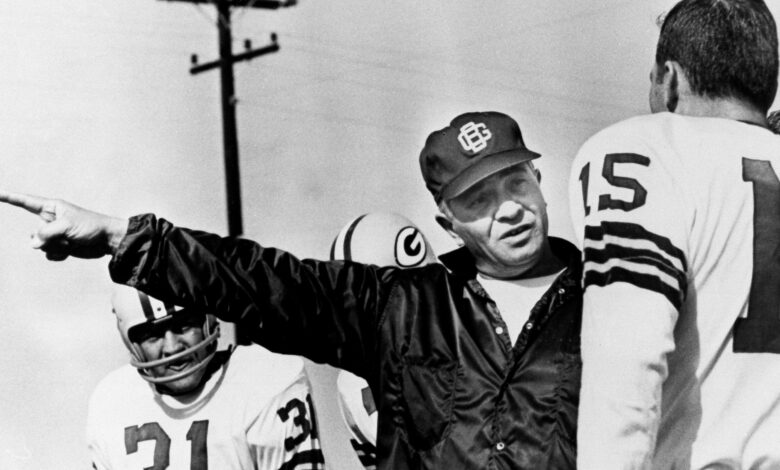Ranking the Best Coaches in NFL History

The backs are in an I-formation. The quarterback play-fakes and takes a seven-step drop. The X-receiver runs a 9-route deep, the Z-receiver an 8-route to the post. Both safeties stay deep, so the quarterback looks off his primary receiver. As soon as his back foot plants on that final step, he resets and fires to the slot Y-receiver, who ran a deep comeback.
Everything in the play I just described was invented by Sid Gillman or Don Coryell: the I-formation, the receiver route tree, precise quarterback drops, three-receiver sets, vertical concepts more refined than “let ‘er rip” … basically, the modern offensive principles that everyone from high school coaches to Madden gamers take for granted.
Gillman began his NFL career with the Rams, concocting a Hollywood-worthy passing game for Norm Van Brocklin and receivers Tom Fears and Crazy Legs Hirsch. From there, it was on to the AFL, where the wide-open playing style allowed him to perfect his offensive philosophy.
Meanwhile, Coryell (shown above) took the head coaching job at nearby San Diego State and began adjusting his patented I-formation into something more pass-oriented. The city of San Diego became a cauldron of new football ideas. A young Al Davis took a job as Gillman’s assistant. A JUCO coach named John Madden began attending seminars where Coryell spoke.
The rest is not history; it’s genealogy. Gillman’s coaching tree begat Davis and the coaches he hired, Chuck Noll, Dick Vermiel and others. Coryell begat Madden, Joe Gibbs and two generations of Super Bowl-caliber offensive coordinators (Ernie Zampese, Al Saunders, Mike Martz, Norv Turner, etc.) Bill Walsh spent a year learning Gillman’s system from Davis, then slowly adapted it into the West Coast Offense.
Without Gillman and Coryell, modern football might still look like that T-formation jalopy your Pop Warner coach made you run.
As head coaches, Gillman won just one AFL title, while Coryell was always a playoff bridesmaid. It took their disciples to turn their innovations into championships. But no list of great coaches can be complete without the two men who sequenced the DNA of modern American football.
Source link
